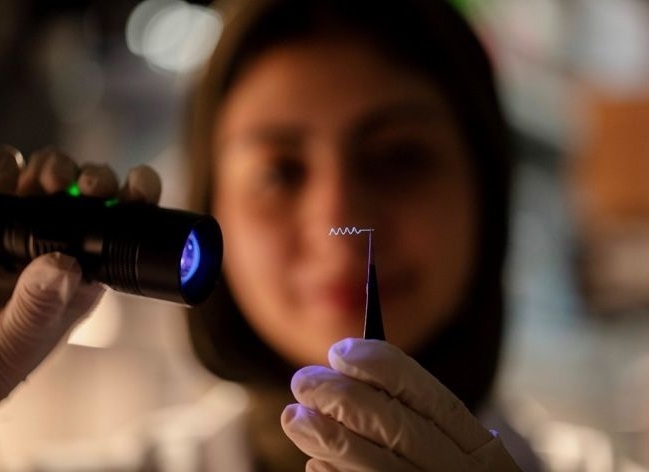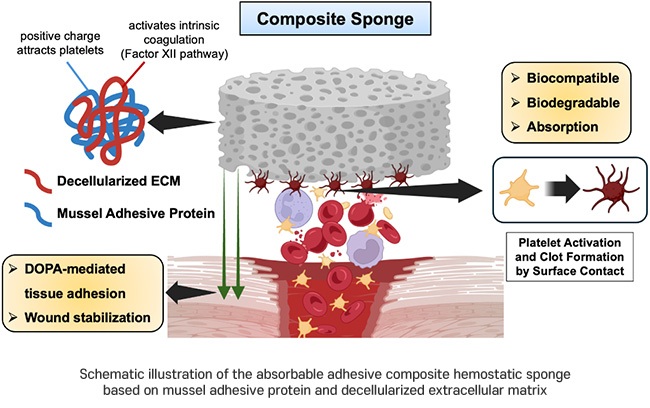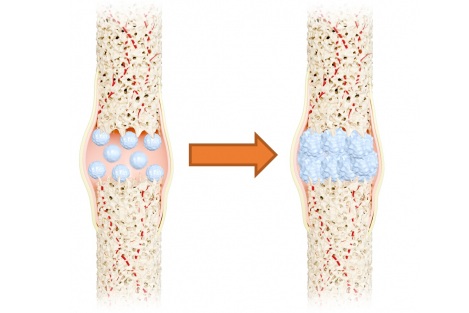Frequent Alcohol Consumption Linked to AF Risk
|
By HospiMedica International staff writers Posted on 28 Oct 2019 |
A new study reveals that people who imbibe small amounts of alcohol almost every day are more at risk of developing atrial fibrillation (AF) than occasional binge drinkers.
Researchers at Korea University Anam Hospital (ANAM; Seoul, South Korea) and Korea University College of Medicine (KUCM; Seoul, South Korea) undertook a study involving 9,776,956 patients without AF who participated in a national health check-up program in order to evaluate the relative importance of frequent drinking, as compared to binge drinking. To do so, both drinking frequency (in days per week), alcohol consumption per drinking session (in grams), and alcohol consumption per week were reviewed.
The results revealed that compared to those who drink twice per week, once per week drinkers showed the lowest risk score, while those who drink everyday had the highest risk for new-onset AF. But the amount of alcohol intake per drinking session was not associated with risk of new-onset AF; only the frequency of drinking was significantly associated with risk. In contrast, when study participants were stratified by weekly alcohol intake (over 210 grams per week), those who drank large amounts of alcohol per drinking session showed a lower risk of new-onset AF.
The patients that drank every day had a 42% increased risk of new-onset AF, while those who drank once a week had a 10% reduction in the risk. When related to absolute increase in consumption, new-onset AF increased by 2% for each one gram/week increase in alcohol consumption. When classified by consumption amounts, non-drinkers had a risk increase of 8.7%, while moderate drinkers and high drinkers showed a 7.7% and a 21.5% increase, respectively, in the risk of AF, compared to those with a mild drinking habit. The study was published on October 17, 2019, in EP Europace.
“Increased risk in the group that drank most frequently was seen irrespective of age and sex differences. Thus this is the major risk factor for stroke associated with drinking, rather than binge-drinking,” said corresponding author Jong-Il Choi, MD, of ANAM and KUCM. “Repeated episodes of AF triggered by alcohol may lead to overt disease. In addition, drinking can provoke sleep disturbance, which is a known risk factor for AF. To prevent new-onset AF, both the frequency and weekly amount of alcohol consumption should be reduced.”
According to the World Health Organization (WHO; Geneva, Switzerland), Alcohol is the leading risk factor for premature mortality and disability among those aged 15 to 49 years, accounting for ten percent of all deaths in this age group. Disadvantaged and especially vulnerable populations have higher rates of alcohol-related death and hospitalization.
Related Links:
Korea University Anam Hospital
Korea University College of Medicine
Researchers at Korea University Anam Hospital (ANAM; Seoul, South Korea) and Korea University College of Medicine (KUCM; Seoul, South Korea) undertook a study involving 9,776,956 patients without AF who participated in a national health check-up program in order to evaluate the relative importance of frequent drinking, as compared to binge drinking. To do so, both drinking frequency (in days per week), alcohol consumption per drinking session (in grams), and alcohol consumption per week were reviewed.
The results revealed that compared to those who drink twice per week, once per week drinkers showed the lowest risk score, while those who drink everyday had the highest risk for new-onset AF. But the amount of alcohol intake per drinking session was not associated with risk of new-onset AF; only the frequency of drinking was significantly associated with risk. In contrast, when study participants were stratified by weekly alcohol intake (over 210 grams per week), those who drank large amounts of alcohol per drinking session showed a lower risk of new-onset AF.
The patients that drank every day had a 42% increased risk of new-onset AF, while those who drank once a week had a 10% reduction in the risk. When related to absolute increase in consumption, new-onset AF increased by 2% for each one gram/week increase in alcohol consumption. When classified by consumption amounts, non-drinkers had a risk increase of 8.7%, while moderate drinkers and high drinkers showed a 7.7% and a 21.5% increase, respectively, in the risk of AF, compared to those with a mild drinking habit. The study was published on October 17, 2019, in EP Europace.
“Increased risk in the group that drank most frequently was seen irrespective of age and sex differences. Thus this is the major risk factor for stroke associated with drinking, rather than binge-drinking,” said corresponding author Jong-Il Choi, MD, of ANAM and KUCM. “Repeated episodes of AF triggered by alcohol may lead to overt disease. In addition, drinking can provoke sleep disturbance, which is a known risk factor for AF. To prevent new-onset AF, both the frequency and weekly amount of alcohol consumption should be reduced.”
According to the World Health Organization (WHO; Geneva, Switzerland), Alcohol is the leading risk factor for premature mortality and disability among those aged 15 to 49 years, accounting for ten percent of all deaths in this age group. Disadvantaged and especially vulnerable populations have higher rates of alcohol-related death and hospitalization.
Related Links:
Korea University Anam Hospital
Korea University College of Medicine
Latest Critical Care News
- Origami Robots to Deliver Medicine Less Invasively and More Effectively
- Improved Cough-Detection Technology Aids Health Monitoring
- AI Identifies Children in ER Likely to Develop Sepsis Within 48 Hours
- New Radiofrequency Therapy Slows Glioblastoma Growth
- Battery-Free Wireless Multi-Sensing Platform Revolutionizes Pressure Injury Detection
- Multimodal AI to Revolutionize Cardiovascular Disease Diagnosis and Treatment
- AI System Reveals Hidden Diagnostic Patterns in Electronic Health Records
- Highly Sensitive On-Skin Sensing Monitor Detects Vitamin B6 and Glucose in Sweat
- Artificial Intelligence Revolutionizing Pediatric Anesthesia Management
- New Device Detects Tuberculosis DNA Directly in Exhaled Air
- New Menstrual Cup Could Detect Infections and Improve Diagnostics
- Engineered “Natural Killer” Cells Could Help Fight Cancer
- Faster Lymph Flow Predicts Better Response to Diuretics in Acute Heart Failure
- New Global Recommendations Aim to End Deaths from Postpartum Hemorrhage
- 'Flat-Line ECG' Indicates Poor Outcomes for Out-Of-Hospital Cardiac Arrest
- New Guidance to Improve Diagnosis and Management of Heart Failure During Pregnancy and Postpartum
Channels
Surgical Techniques
view channel
Novel Glue Prevents Complications After Breast Cancer Surgery
Seroma and prolonged lymphorrhea are among the most common complications following axillary lymphadenectomy in breast cancer patients. These postoperative issues can delay recovery and postpone the start... Read more
Breakthrough Brain Implant Enables Safer and More Precise Drug Delivery
Delivering medication directly to specific regions of the brain has long been a major challenge in treating neurological disorders. Current implants and infusion systems typically reach only one or two... Read morePatient Care
view channel
Revolutionary Automatic IV-Line Flushing Device to Enhance Infusion Care
More than 80% of in-hospital patients receive intravenous (IV) therapy. Every dose of IV medicine delivered in a small volume (<250 mL) infusion bag should be followed by subsequent flushing to ensure... Read more
VR Training Tool Combats Contamination of Portable Medical Equipment
Healthcare-associated infections (HAIs) impact one in every 31 patients, cause nearly 100,000 deaths each year, and cost USD 28.4 billion in direct medical expenses. Notably, up to 75% of these infections... Read more
Portable Biosensor Platform to Reduce Hospital-Acquired Infections
Approximately 4 million patients in the European Union acquire healthcare-associated infections (HAIs) or nosocomial infections each year, with around 37,000 deaths directly resulting from these infections,... Read moreFirst-Of-Its-Kind Portable Germicidal Light Technology Disinfects High-Touch Clinical Surfaces in Seconds
Reducing healthcare-acquired infections (HAIs) remains a pressing issue within global healthcare systems. In the United States alone, 1.7 million patients contract HAIs annually, leading to approximately... Read moreHealth IT
view channel
Printable Molecule-Selective Nanoparticles Enable Mass Production of Wearable Biosensors
The future of medicine is likely to focus on the personalization of healthcare—understanding exactly what an individual requires and delivering the appropriate combination of nutrients, metabolites, and... Read moreBusiness
view channel
Philips and Masimo Partner to Advance Patient Monitoring Measurement Technologies
Royal Philips (Amsterdam, Netherlands) and Masimo (Irvine, California, USA) have renewed their multi-year strategic collaboration, combining Philips’ expertise in patient monitoring with Masimo’s noninvasive... Read more
B. Braun Acquires Digital Microsurgery Company True Digital Surgery
The high-end microsurgery market in neurosurgery, spine, and ENT is undergoing a significant transformation. Traditional analog microscopes are giving way to digital exoscopes, which provide improved visualization,... Read more
CMEF 2025 to Promote Holistic and High-Quality Development of Medical and Health Industry
The 92nd China International Medical Equipment Fair (CMEF 2025) Autumn Exhibition is scheduled to be held from September 26 to 29 at the China Import and Export Fair Complex (Canton Fair Complex) in Guangzhou.... Read more














